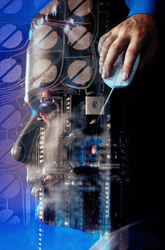Brainy remote control
The unique plastic properties of the brain render it ideal for the control of the sensorimotor behaviour of an artificial body, such as a mobile robot. This plasticity makes the system highly adaptable to its changing environment, as its performance is adjusted on the basis of previous experiences. In the context of the NEUROBIT, neural populations, kept alive in vitro, are connected in real time to an autonomous robot. A closed feedback loop exploits the adaptive properties of neurons in order to control the robot behaviour. A set of sensors is used to drive stimulation patterns to the channels identified as inputs of the neural network. The pattern recognition and processing of these signals yields the output which is used to control a robot through the appropriate mounted sensors. The system is based on two closed-loop paths working together. One conveys the data bus, analogue and digital, for acquisition, processing and stimulation, and the other conveys the associated control bus. The NEUROBIT rack has a modular architecture which allows customized set up of acquisition and stimulation channels, according to the user needs. The analogue data path is implemented in a single hardware element to minimize external noise coupling. Moreover, biological real-time processing is possible since the closed-loop data path delay is less than 50 µs. Dedicated hardware and software elements were specifically designed for the optimal processing of real time multi channel electrophysiological data. Through the linking of neural populations with a physical entity, the mechanisms of sensor/motor integration, control and adaptation in a living system can be studied.







